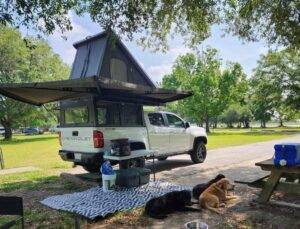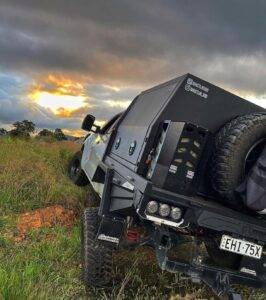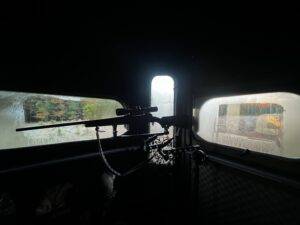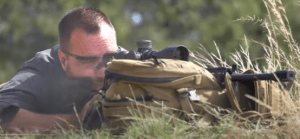

Emergency Communication Device Guide (Walkie Talkies, Satellite Phones) For Your Adventure
Your outdoor adventure should bring a sense of fulfillment and joy. And while that is most often the case, a responsible traveler should be prepared for emergencies. Many outdoor camping/hiking locations do not have reliable mobile phone networks, if any at all. Having a communication device like a walkie talkie that’s independent of external networks can come in pretty handy. However, there are several points and devices to consider, as we’ll discuss here.
1. Walkie Talkies
Walkie talkies are the simplest and easiest options to employ for communication. You don’t need a license, there are no fees or bills to be paid, and even the best walkie talkies on the market can be pretty affordable. These devices are easy to operate and allow unencumbered communication over a fairly good range. Most of these follow the push to talk method. Users also have access to some channels to allow for some privacy and stable communication between groups.
There are some drawbacks of using a walkie talkie. The first is that range can be significantly impacted by terrain. Expect dramatically reduced range if you are in forests, valleys, or other imposing features. Additionally, walkie talkies are best for communicating between a group. If assistance is required from authorities, walkie talkies won’t be of much use.
2. Satellite Emergency Notification Device (SEND)
Also called Satellite Messengers, these are often small and portable devices that allow text communication through satellite networks. You can employ two-way messaging to contact family and friends, and if necessary, even reach out to authorities. When requesting emergency assistance, these devices can help deliver more information to authorities and help them in finding the location.
Features vary between devices, with some simply able to send SOS messages, while others have more extravagant features including navigation, colored screens and the ability to post on social media. Of course, getting more features can also add price, bulk, and deplete battery life faster.
Satellite Emergency Notification Devices, however, can be expensive. Besides purchasing the device, users also have to fork out money for a subscription fee. It is possible to get around the high costs by using rentals devices. They aren’t cheap, but rentals beat having to buy and paying for a subscription.
3. Satellite Phones
Satellite Phones are more feature-packed devices that allow better connectivity through text and voice. It is worth noting that though satellite-backed devices like this work in most areas, they are essentially dependent on satellite connectivity. In some cases, foliage or even poor terrain and location can hinder or block connectivity. Although, that is more of a rare scenario.
People who use a satellite phone should take care to get the number of the nearest public safety answering point or emergency response team. This is useful in reaching the nearest help quicker and can make a big difference.
What turns people off from using satellite phones are the massive associated costs, bulk/weight of the device, and possibly low battery life. The cost factor can again be handled by renting the phones, though weight and battery life remain a concern. Although that is a small price to pay for the features and security on offer.
4. Personal Locator Beacons
Personal Locator Beacons (PLBs) are very simple, yet highly effective devices. In some ways, these are very similar to the other satellite-based solutions we have here. Should you need assistance, they’ll connect to satellites and send an SOS message to the authorities.
Some of these devices will include personal information of the user, like name and emergency contacts with their connection. However, mostly, the device intends to give rescue-workers a fix on the user’s location. They do not allow two-way messaging or custom texts. You will need a clear view of the sky, preferably in an open area.
PLBs must be registered with NOAA (National Oceanic and Atmospheric Administration). While the scope of these devices seems limited, they are inexpensive, have a good range, and the battery can last a very long time. Some devices can go years on a battery. A downside is that users often have no idea if their message was sent and/or received by appropriate authorities.
Lack of two-way communication can be pretty unnerving, especially in emergency situations. Thankfully, the devices have a fairly good operating range and there’s a good chance of the request for help being acknowledged. That also means users should be careful not to mistakenly press the text button.
5. Ham Radio
Handheld amateur radio or ham radios are a solid option to consider. These radios have a good range and often can communicate with individuals as well as authorities. A thriving community of ham operators is a big draw, but they’re pretty useful for emergency communication as well. Generally speaking, ham radios use the push to talk method, but they have access to more frequency bands, and can offer some private communication.
Their ability to use frequencies that can work with search and rescue responders makes them an excellent communication device. While range might be reduced by geographic limitations, it can still be fairly large to reach relevant authorities. The downside here is that these radios need a license from the authorities to operate.
Moreover, users must stay on frequencies allotted to their license or risk punitive action from the authorities. However, this is often waived for emergencies and life or death scenarios.
So Which Emergency Communication Device Should I Pick?
The pros and cons of emergency communication devices have been discussed above. In most situations where you’re not on a particularly adventurous trek/hike, or in a remote area, a walkie talkie should work just fine. Keeping in touch with your group can be good enough. However, for more ardent and remote locations consider more advanced options. At the very least, PLBs should be considered the bare minimum, though don’t hesitate to take along more advanced devices as well.






